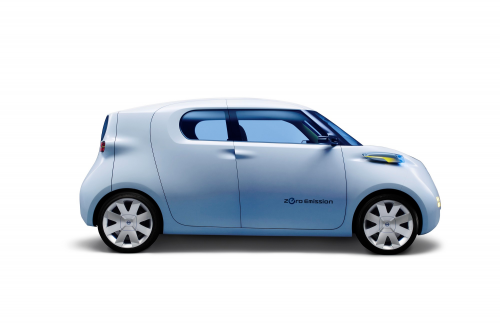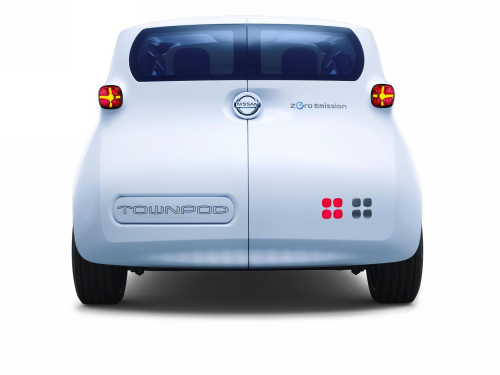What's the future of the new york city pay phone?
what’s the future of the new york city pay phone? the shortlisted Ideas in the ‘reinvent payphones’ design challenge via ad age [RK]
what’s the future of the new york city pay phone? the shortlisted Ideas in the ‘reinvent payphones’ design challenge via ad age [RK]
infographic: china only one part of apple supply chain. 748 suppliers. 331 in china out of 600 in asia. via asia society [RK]
forrester’s top 10 trends for mobile in 2013. via washington post [RK]
rolling out Wi-Fi to a network of stores is among the most capital intensive and complex projects IT departments will tackle this decade. via wsj [RK]
wipro beats outs apple, hp as it tops greenpeace’s guide to greener electronic’s. first launched in 2006, greenpeace’s guide looks at environmental conditions for electronics manufacturers. hp 2nd, apple 6th. via washington post [RK]
 click > enlarge
click > enlarge
Looking back ( it seems way back ) to the 2010 Paris Motor Show let’s revisit Nissan’s second electric vehicle (EV) concept. The Townpod was developed as a green DIY vehicle.

With the Townpod concept Nissan wants to offer the possibility to customers of choosing the interior specifications of their vehicle by using proprietary as well as third-party sourced accessories. The idea is that everyone adapts the car to its individual needs. For example a musician transporting its kit between gigs, a delicatessen proprietor distributing their wares or an architect carrying drawings to a client musician.
According to Nissan’s Exploratory and Advance Planning Department, François Bancon, “Only they know what is essential for their lives, so it is logical that they should be the ones who determine the ultimate specification of their cars. For them an off-the-shelf solution is not enough and the best-equipped people to tailor-make their cars are themselves. What is more revealing is that Nissan Townpod users do not appreciate stereotypes or status symbols. For them, the ultimate status is to have no status.”
[ exterior design ]
Externally Nissan Townpod consist of many familiar elements, yet it is different. It employs the same zero-emission technology found within Nissan LEAF. Charging points can be found in the nose behind an automatically retracting cover.
The headlights reflect Nissan Townpod’s philosophy of stylish utility by serving as position markers when the blue “petals” are closed and headlights when open.
The car is decidedly more van-like with its split rear doors. Innovative hinges allow the rear doors to slide, then open in confined spaces and then fold to the side of the car so as not to obstruct passing traffic or pedestrians. A hatch-like sun roof, directly above the cargo area, allows Nissan Townpod to carry taller objects.
[ interior design ]
The driver is faced with an uncomplicated yet futuristic steering wheel and two familiar stalks to operate the lights and wipers, but other than these controls – which are beautifully simple in their own light – the flowing dashboard is devoid of mechanical switches. Forward or rearward drive is selected using an uncomplicated joystick set into the right-hand side of the driver’s seat base.
The rear seat itself has an interesting trick incorporated into its design. While it is not uncommon to find rear seats that slide or fold, enabling passengers to either prioritize leg room or luggage space, the ultra-slim design of the seats means that the rear bench can fold and slide right into the back of the front seats, freeing the entire, flat-bottomed space behind to carry bulky cargo.
[ dual screen display ]
All controls for ancillaries such as climate control and media playback are accessed through two centrally mounted digital screens. The upper monitor serves as an instrument panel, displaying car speed, battery status and remaining range as well as a satellite navigation system. This system is also equipped with Bluetooth wireless technology, allowing it to communicate with the driver’s Personal Digital Assistant (PDA) that will map out a plan for all your appointments that day. It will also be able to suggest the most convenient time and place for you to recharge its lithium-ion batteries.”
The lower touchscreen provides all controls for the navigation system, allows users to perform system checks on the whole car and operates Nissan Townpod’s audio system.
[ conclusion ]
At its core, a car is a means to transport people or goods from one place to another as simply and easily as possible. Though two year’s old, a long-time in the concept category, Nissan Townpod’s design supports the essence of its function. [ nissan zero-emmissions ] [ nissan ev history ]
ipad mini, surface, other tablets deconstructed. a look at who’s making a hardware profit on tablets and who’s not. via washington post [RK]
college students show off their robots. hold your bets when blackjack dealer is a robot. via wdtimes [RK]
 hope app concept released to the ngo community in 2011 | click > enlarge
hope app concept released to the ngo community in 2011 | click > enlarge
How do you better prepare people for disaster using mobile technology?
 blacked out manhattan monday night
blacked out manhattan monday night
A timely question with Sandy fresh in our minds. However, that question was triggered by this story: In 2011, strategic design consultancy RKS took the lead and worked with interactive agency InterFUEL to address an issue they had faced themselves: the anxiety of being without news from a relative involved in a natural disaster, and the lack of preparedness to face those issues. It all started with InterFUEL partner Takeshi Horiuchi sharing his experience with the earthquake in Japan. “When I found out about the disaster on TV, I started trying to connect with my in-laws in Japan in any possible way. However, for the next couple of countless and sleepless days, I had no luck connecting with them. Torn between fear and hope, I watched the news showing the familiar scenes nearby their hometown. Then, finally, my brother sent me a short text message saying my relatives made it home, and they are OK…. what a BIG relief!”

Inability to reach out to family is not the only issue; further research by the RKS team unveiled a deficit of preparedness within the US population. Indeed, more than 50% of US households have no family emergency plan, and confidence in healthcare’s response capabilities has continually dropped over the last decade. RKS looked at what was needed to create a world where individuals are prepared, connected, informed, and hopeful. A smartphone app appeared to be the simplest way to connect during a disaster, help with relief coordination, and provide a platform to channel goodwill. To learn more about the features of the Hope App concept, you may refer to the [ case study ] on RKS website.
What if the new best practice for firms was empowering employees to make a significant change?
Google’s “20% Innovation Time” policy allows employees to dedicate one fifth of their time to developing projects of their own, and give them a chance to make an impact. Along the same line, environmentally friendly outdoor gear company Patagonia funds salaries and benefits to employees who volunteer for an environmental group. These opportunities strengthen the company’s brand image; increase staff motivation, and have a positive impact.

Red Cross’ recent launch of four mobile apps that prepare citizens for natural disasters is a good illustration of how user experience design can expand the capabilities of Non Governmental Organizations.
According to Ravi Sawhney, founder and CEO at the strategic design consultancy RKS, designers have the power to make an impact more than any profession. “What designers do best is creating visions of what could be and should be. By collaborating with non-profits and other organizations, we have the power to bring our dreams to life and make the world better.” [ rks ] [ red cross ]
iPhone 5 modular design makes it easier to swap parts. meaning that it’s easier for professionals to repair. via washington post [RK]
All content ©2007 > 2024 DesignApplause